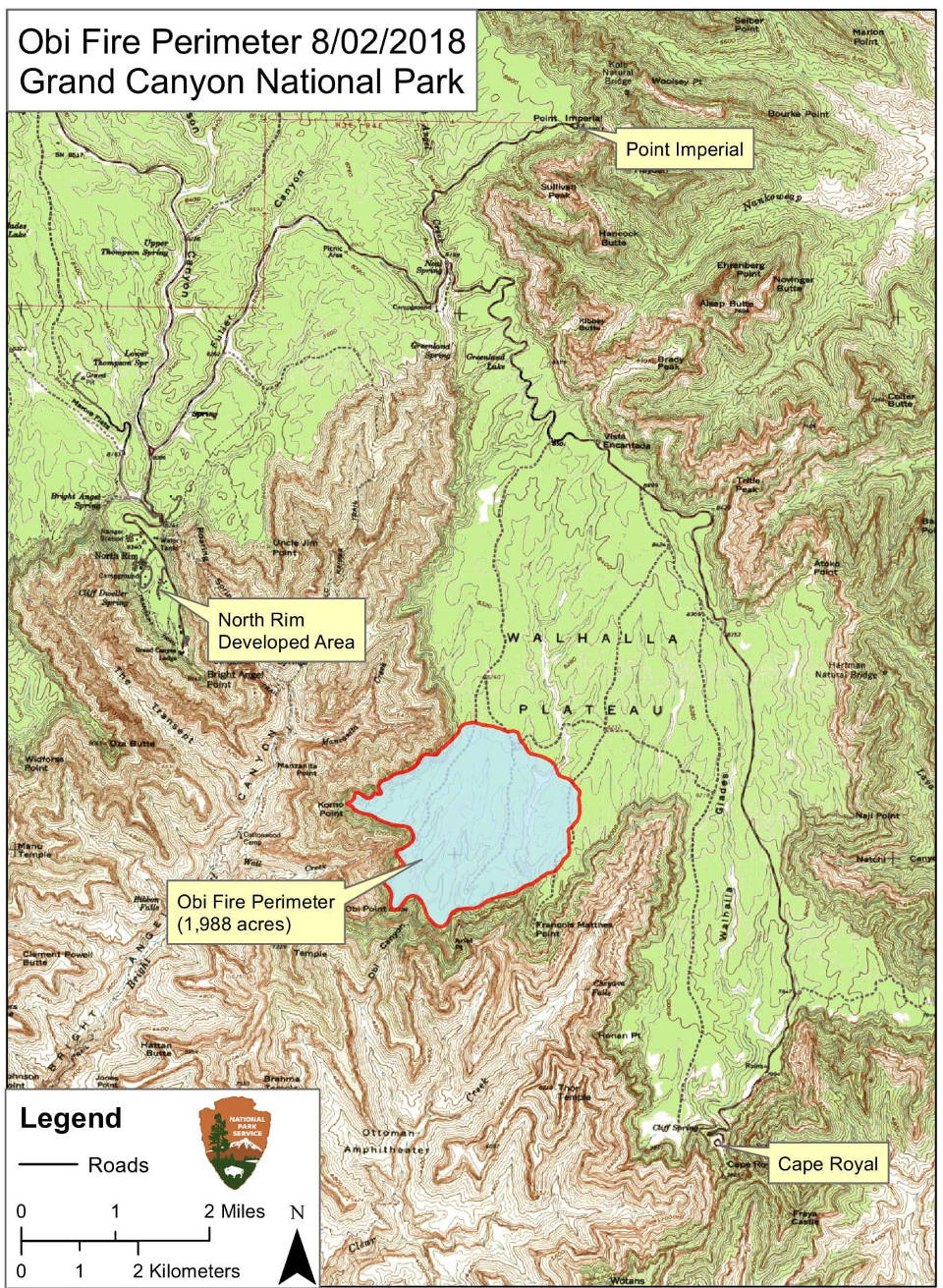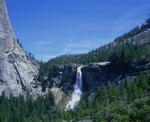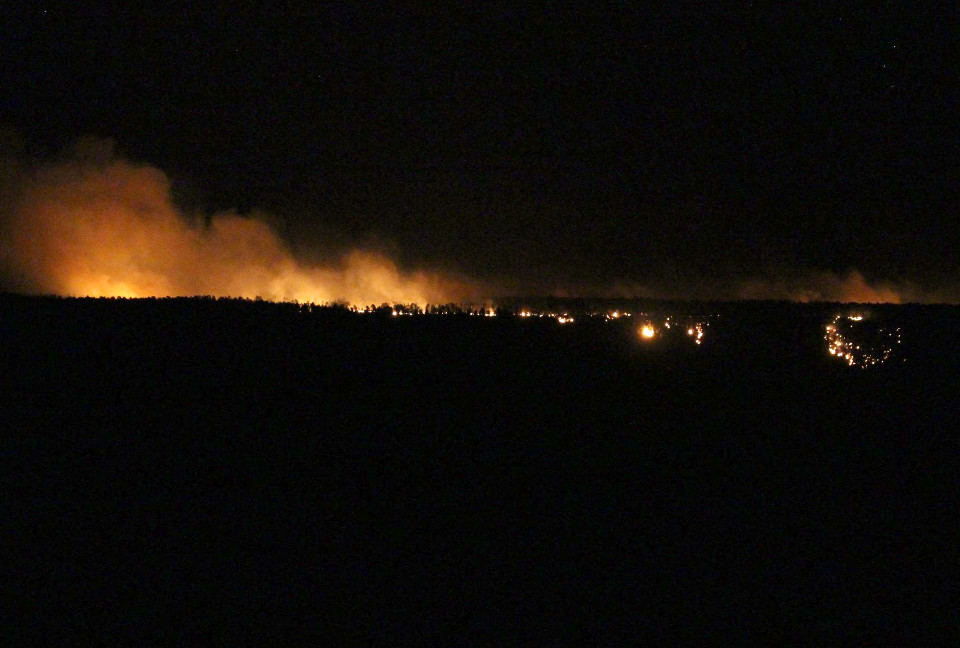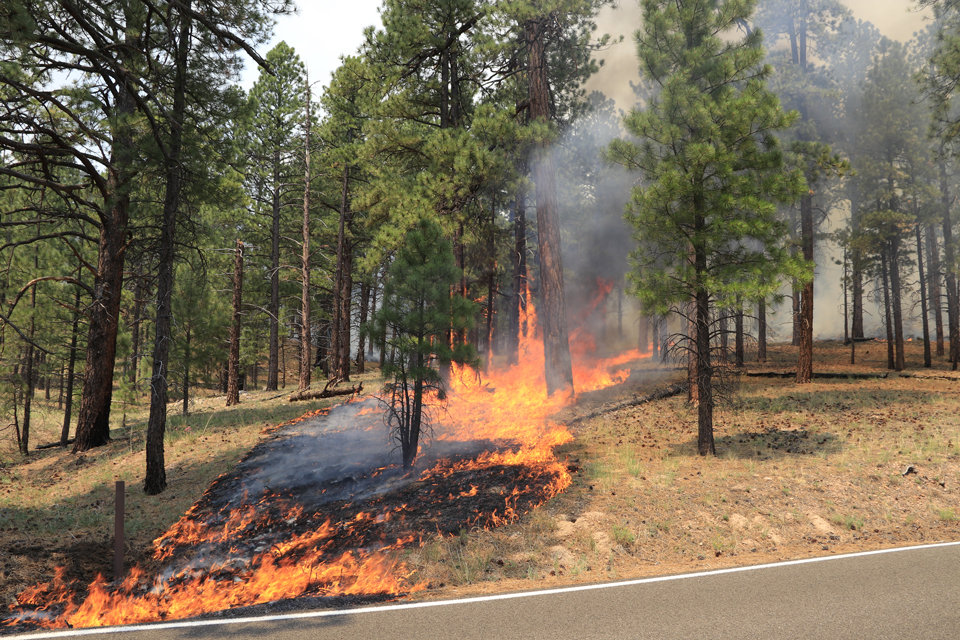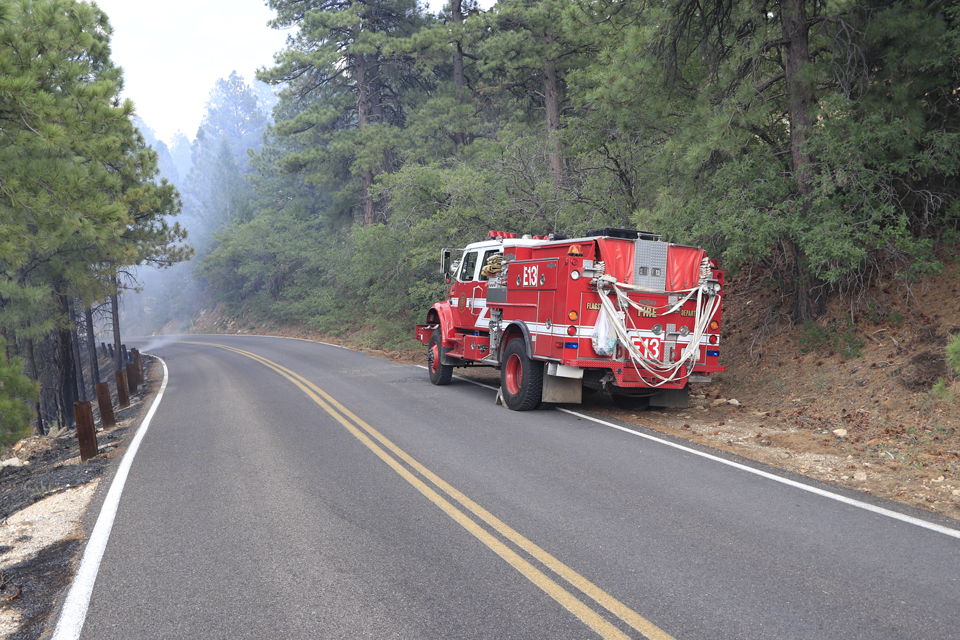The Obi Fire is approximately 2,270 acres. Growth today was primarily in the northern and eastern portions of the fire perimeter. Light southwesterly winds throughout the day allowed fire to grow through pine needles and downed logs. Fire behavior was active with single tree torching and surface fire of one to four foot flames where the fire was consuming dead logs. "While crews continue prep of the Walhalla Plateau, we would like to acknowledge the inconvenience it creates for visitors and appreciate their understanding in prioritizing firefighter and public safety," said Incident Commander trainee Bryan Hakanson.
Located in the far southwest corner of the Wahalla Plateau above Obi Point, the Obi Fire started on July 21st. Fire managers plan to continue the strategy of confining and containing the lightning caused fire in a predetermined area while providing for point protection of identified sensitive natural and cultural resources.
Smoke from the Obi Fire is visible from both the North and South Rims of the park. Visitors may see increased smoke or haze filling the canyon. For more information about air quality at Grand Canyon National Park visit,https://www.airnow.gov/index.cfm?action=airnow.local_city&cityid=31 .
Each fire start is evaluated by fire management officials for the most appropriate management strategy. Firefighter safety, resources at risk, location of the fire, available resources, regional and national preparedness levels, and weather forecast are taken into consideration when responding to a wildfire ignition.
Please visit https://www.nps.gov/grca/learn/management/firemanagement.htm for other information about wildland fire at Grand Canyon National Park or call 928-638-7819 for recorded fire information. For additional information and photos of the fire, visit https://inciweb.nwcg.gov/incident/6030/.
